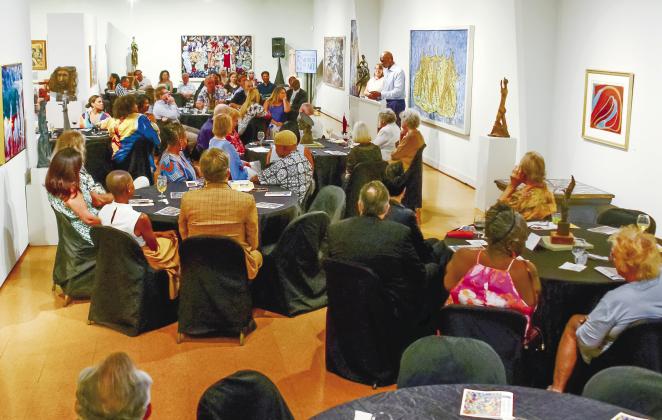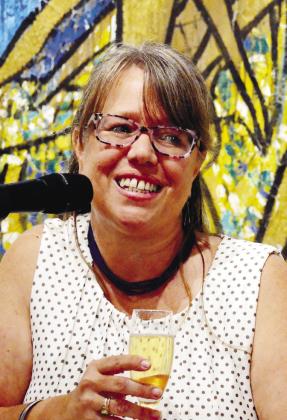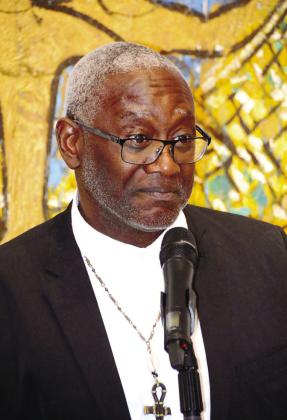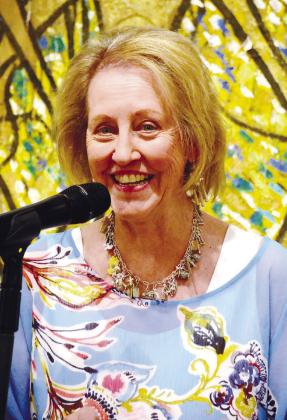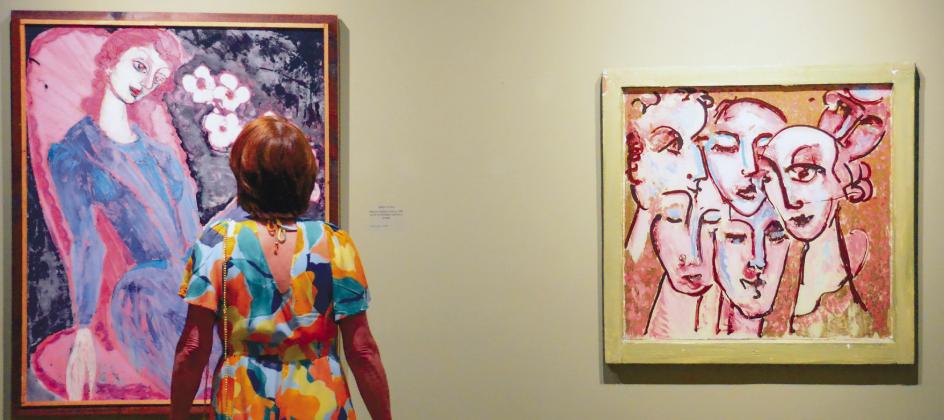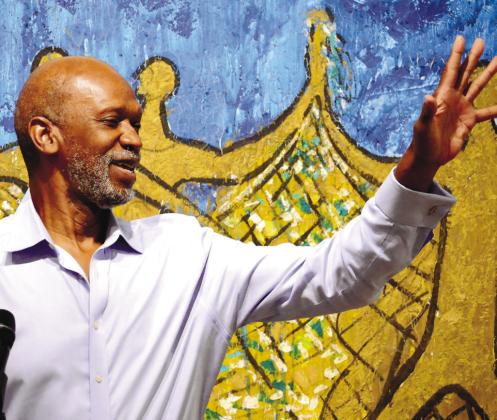The Steffen Thomas Museum of Art in rural Buckhead celebrated its Founder’s Day on July 1, honoring the artist’s late wife and lifelong muse, Sara Douglass Thomas.
Sara used her life’s savings to build and open the 13,000-square-foot museum in 1997, dedicated solely to preserving Thomas’ body of work and emphasizing his contributions to art and forward-minded opinion.
“This museum would not be here if she had not done what she did. And there are very few people who would’ve done this,” stated Lisa Conner, the youngest of the Thomases’ four children. “I mean, she was literally almost 90 years old when it opened, but she started the plans for it much earlier.”
Thomas, the artist, died at 84 in 1990 after a prolific career in public art installations, as well as personal and gallery pieces.
He is credited with creating more than 8,000 pieces throughout his lifetime, among them stone and wood carvings, welded sculptures, watercolor and oil paintings, drawings, mosaics, and almost any other art media available, including found and discarded objects, both natural and man-made.
But Saturday evening’s event was about honoring Sara, an Atlanta schoolteacher who married Steffen in 1933, just six weeks after meeting him.
Museum Director Alyson Vuley opened the program by introducing Kevin Sipp, the exhibitions manager for the City of Atlanta’s Mayor’s Office of Cultural Affairs. Sipp spoke passionately about the important role Sara Douglass Thomas filled in life and continues today.
“I wanted to touch upon Sara Douglass Thomas being the keeper of Stephan Thomas’ legacy, and about how important it is as an artist to have an advocate. And to have an advocate within the family is special,” Sipp said.
“I’ve heard horror stories about artists who when they passed away, their children, their wives, their family members weren’t prepared to take care of the art they left behind or some didn’t even care to take care of the art that was left behind and it would end up being tossed away, lost forever, which is a real shame.
“So how special it was not only for Sara Douglass Thomas to hold that legacy, but to advocate for an institution to be built to keep it, which is extremely special,” he added. “And what’s interesting about it, I learned years ago that in Europe most of the major museums are not the museums we hear about. They’re small museums like this dotted all over the European landscape that house some of the most famous artwork we see in history books.
“So, this idea of being able to do that here, I think is very special. This museum is a very unique gem in Georgia, not just in the region, but in the Southeast, really.”
Following Sipp’s presentation, recently retired Morgan County High School art teacher Tyrus J. Manning III was given the museum’s Charlie Bonner Award for Advancing Art Education. After accepting the award, Manning entertained the crowd of about 80 art lovers with a trio of original songs accompanied by his guitar.
“I was blown away,” Manning admitted later about being notified of his recognition two months earlier. “I mean, I retired and here I’m getting an award for doing what I did in the past. But I guess I did do it for 20 years. And I really loved it. And I think with almost all the students, I still keep in touch with everybody.”
Beyond his music, Manning said he remains involved in creating visual art, with his most recent efforts involving putting mosaics of sheet music together and then finding “pictures” or patterns created within.
“I always want to try to incorporate music when I make art. It’s sort of like automatic drawing where you make the first mark and then let that mark inspire the second one. Kind of like where you look at the clouds,” he explained. “But the way I do it is I’ve been into collages with sheet music and then scribbling it with chalk and then trying to find real weird, trippy stuff in it.”
As the event was wrapping up, Conner said each year at this time she’s thinking of both her parents, but especially of the sacrifices her mother made in supporting Steffen’s artistic endeavors while simultaneously raising three girls and a boy. In the end, she and her husband, as well as her late brother, Douglass, moved nearby to be with their mother as the museum was being constructed.
“So, we were here in the museum every day, but she just felt that she wanted to immerse her life in the museum for the last of her life. That’s why we have the family living room here with furniture and personal things because she said she wanted people to feel they were coming into the home of the artist,” Conner said. “She lived here, right at the museum.”
“She was a pretty amazing person,” Conner continued. “She was a very quiet, serene person, but she knew what she wanted to do as soon as my father passed away. She knew she wanted to do something to preserve the art, make sure it stayed together as a collection and she would be there to see that happen.”

